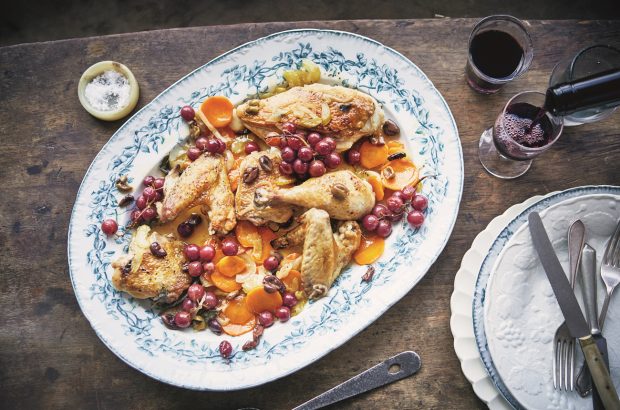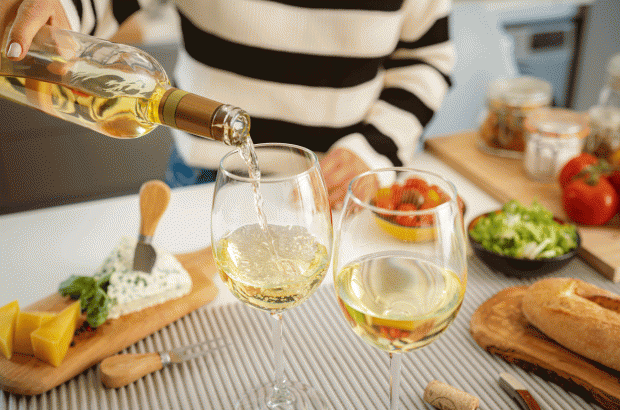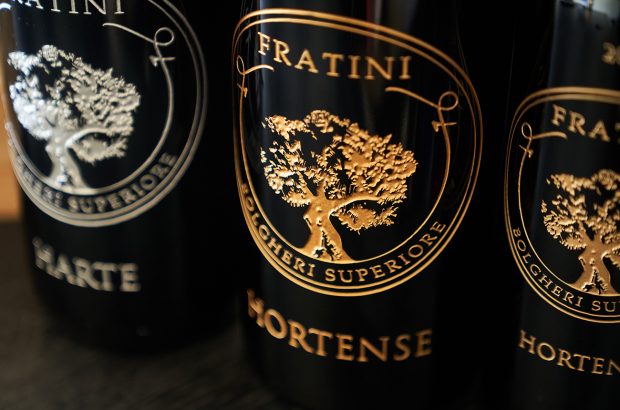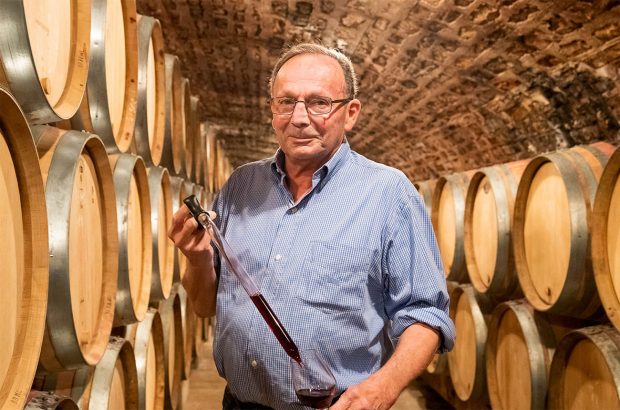Launched into the media spotlight, the Union des Grands Crus de Chablis was inaugurated amid much celebration and back slapping. Yet, like at all such parties, lingering doubts about the future of grand cru Chablis were not far from the surface, and the absence of a couple of prominent producers was notable.
The party, formed in March, has a simple aim: ‘To defend and promote the quality of Chablis grand cru wines’, according to its president Michel Laroche of Domaine Laroche. It is a voluntary, non-profit organisation of 19 grand cru producers, representing 70% of the 100 hectares (ha) of the seven grand cru climats: Blanchots, Bougros, Les Clos, Grenouilles, Preuses, Valmur and Vaudésir (on the south-facing shoulder of land close to the village).
Chez Laroche
The move is an attempt to secure the quality of the top wines and capitalise (and, yes, increase prices) on renewed interest worldwide in Chablis, especially as the American market picks up. Where dissension falls is on just how effective the union will be. Some grand cru members have joined but are tentatively waiting to see if it has the requisite teeth to survive, while others are holding back, demanding a more stringent set of rules before signing up. And decisiveness is needed on certain issues: whether to make hand harvesting mandatory among members, and whether or how much to reduce yields. On both matters, opinion is divided. (Though division on such issues is hardly singular to Chablis.)
The notable absentees are Domaine René & Vincent Dauvissat and Jean-Marie Raveneau. Raveneau doesn’t want to join at this point ‘because the union is not strict enough about quality. If you want to create something prestigious, you have to pass quality regulations’. He says he might join if stricter quality was enforced.
Michel Laroche and Jeanjean merge
However, Laroche, ever the diplomat, and at this particular weekend, the charming host as Domaine Laroche celebrated its 150th birthday, countered: ‘The intention of the union is to upgrade the level of quality of the wines and on this point I strongly believe education is more useful than rules and regulations’.
During a tour of the sites, and tasting, the question of hand or machine harvesting stirred up the most debate. With machine harvesting, grapes can be crushed or bruised, and then may suffer oxidation before they reach the press at the winery; hand picking, on the other hand, ensures the grapes arrive undamaged.
Bernard Hervet, of Domaine William Fèvre (and union vice president), where all grand cru sites are hand harvested, said the union would have to broach this issue. ‘Hand harvesting has to become mandatory to improve quality and for the union to be seen to be pushing the quality. If, in the near future, the union’s quality charter has not been transformed into fact, the union will not have achieved its aim – we must have high ambitions.’
And if it doesn’t? ‘The union will not survive. It cannot continue unless it pushes the parameters of quality. It is good that the union members have got to know each other better, but that is not enough for the future.’
At Long-Depaquit all 18ha of grand cru is hand harvested, and as Gérard Williem conceded: ‘This is a tricky question… it’s political. I reckon that the union will end up with hand harvesting. It looks as if the grand crus will go this way’. But, he added: ‘The most important thing is the location of vine’.
Pick and choose
Yet at Servin, marketing manager Marc Carmeron disagreed. ‘The machine can harvest very quickly and this can be a benefit in some years,’ he says. ‘Also, machines today are better than 10 years ago. You can no longer tell the difference between machine harvested and hand picked grapes.’
‘Flexibility’ is key as far as he is concerned. ‘In some years, 100% of the grand cru sites were hand harvested as some vines were hit by wind and the machine cannot tell between good and bad grapes.’ So does Cameron believe there is a quality issue here? ‘No, there is a difference: more aroma comes out earlier if the grapes have been machine harvested; on the whole, if grapes are hand picked, the flavour comes out later as the aroma takes longer to evolve.’
At Domaine P&F Vocoret all the grand cru sites are machine harvested, and Patrice Vocoret dismissed the debate, saying: ‘Any issue over machine harvesting is a journalist thing: they’re the ones most bothered by it.’ (Slight dissension in the scribbling ranks at this.)
But why would a top level Burgundian region not want premium methods, even if just to instil the aura of quality? Why not bow to the highest quality standards? Hervet suggested that the relative youth of the region was a factor. ‘In terms of sizeable production, it is still quite young.’ (In 1945, there were only 400ha of Chablis vineyards, then came the 1970s ‘white burgundy boom’ when new vineyards were planted and lesser regions classified upwards, bringing the area planted today to 4,500ha.) ‘Many people here don’t have the generations of tradition. I think the new generation will come round to it.’ Cost is also a factor. Hervet pointed out that to machine harvest costs approximately FF9,000 per hectare, while hand picking averages FF14,000.
Yield is another sensitive subject. The appellation controllée regulates that yields in the grands crus are restricted to 45 hectolitres per hectare, yet as Fèvre’s Hervet said: ‘Yields have to be more severe than at present’. Laroche concedes that this is another subject that the union must address. ‘Inevitably a union begs the question of quality, and that quality has to be worthy of being ranked with the best wines. The aim of this young association is to defend and promote the rules of the seven climats.’
Quality charter considerations
Seven points are currently being considered for a quality charter: one, the environment, and how viticulture and fertiliser can respect it; two, the number of vines per hectare for new plantings. Three, specific levels of pruning which need to be more severe. Four, yield and viticulture: recommending ways of improving the health of bunches. Five, harvesting techniques. Six, the time before wine is allowed to be shipped by union members, currently 15 months following the harvest. And seven, tasting and control, with the aim of having a logo for bottles that deserve to be recognised by the union.
One achievement of the union, immediately apparent, was the communication and bonhomie among members, many together, and tasting each others wines to such an extent, for the first time. As part of its inception, the union organised a magnificent tasting of 33 wines from 21 vintages stretching back to 1959. This was the most comprehensive grand cru Chablis tasting that many of the producers themselves had attended, let alone the invitees.
And as the day passed into evening, and songs were sung, the importance of bonhomie became ever more apparent. Moreau brought forth his 1979 Les Clos… ‘we only burn once’… this was still showing amazingly young; then we enjoyed a 1992 Pinson Les Clos: quite evolved, and rich; a 1989 Valmur was quite youthful with good fruit, and a 1929 Domaine Simonnet all coffee and marmite, but rich with still a touch of acidity left. Last and, to be fair, for some, least, the 1982 Les Blanchots marc… time to go home.
Chablis remains one of the great wines of the world and only time will tell whether such a good start will be carried through; whether the union can ensure even better, finer wines in the future.














